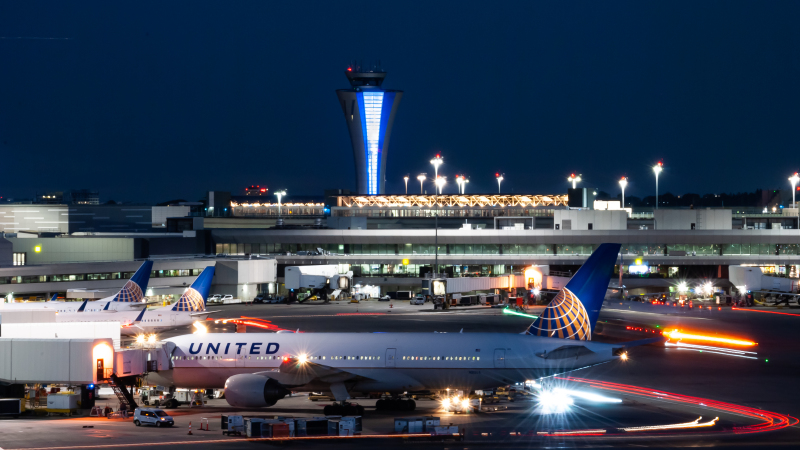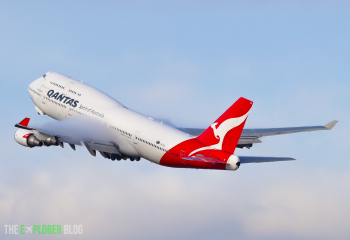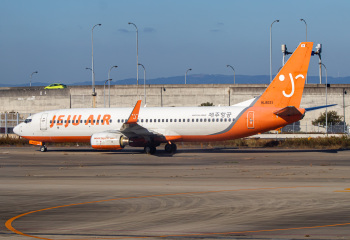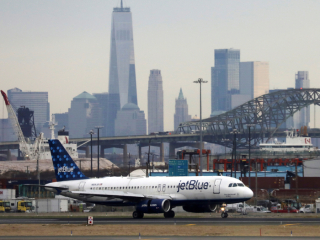On Friday, April 5, a magnitude 4.8 earthquake rocked eastern New Jersey, causing buildings to shake for up to 30 seconds. The shaking was felt as far North as Albany in New York and south as Wilmington in Delaware. Following the earthquake, there were no reported deaths or injuries; the only damage to be noted was weaker buildings. Friday’s earthquake was one of the largest felt across the Northeast in recent years.

Ground Stops
The Federal Aviation Administration (FAA) issued ground stops at the airports closest to the epicenter in response to the earthquake. The airports affected by ground stops included Newark Liberty Int’l Airport (EWR) and New York John F. Kennedy Int’l (JFK). The FAA ground stop was issued as a precaution while workers at these airports assessed airport facilities for any damage caused by the brief earthquake.
The ground stop at JFK was lifted first at around 11:10 a.m. local time, while the EWR ground stop was lifted around 20 minutes later at 11:30 a.m. local time. Delays at JFK following the ground stop were less significant than in Newark, with JFK reporting an average 20-minute delay for flights departing the airport. In Newark, however, for some unlucky flights, this delay time was as high as one hour.

During earthquakes, it is standard operating procedure for airport facilities to cease operations while the tremors occur. Some airports, such as those in Japan, are prone to powerful, long earthquakes, but they are built to withstand more powerful quakes and have developed procedures to follow after a powerful earthquake. At Narita Airport (NRT) in Tokyo, if an earthquake of a certain magnitude or greater is detected, an announcement will sound, notifying passengers to stay calm and away from windows, walls, and pillars.
If an earthquake is powerful enough in Japan, the terminal buildings will be evacuated, with airport employees bringing passengers outside on the tarmac. Following the Tōhoku earthquake in March 2011, all flights out of Japanese airports north of Tokyo were canceled.

Most airports in Asia along the so-called "Ring of Fire" are built to an extent to withstand strong earthquakes. Following the April 4 Hualien City earthquake in Taiwan, air travel out of many of Taiwan's major international airports continued as normal, with only minor damage and delays reported from airlines. Some airports in Southern Japan were closed temporarily following the earthquake but have since reopened with minimal disruptions.
Most aircraft landing gears are built with shock absorbers to withstand hard landings. This means that an aircraft's landing gear will absorb most of the quake's tremors during an earthquake, leading to the aircraft being unaffected and undamaged.

Besides potentially affecting airport buildings and the sensitive radio and electrical equipment inside them, earthquakes can also affect airport runways through a process known as liquefaction. Liquefaction occurs when the rapid shaking of the ground during an earthquake causes the soil underground (typically soil with a higher amount of water) to act as a liquid. Liquefaction can no longer support the weight above it.
This means that if an earthquake is powerful enough to cause the liquefaction of the soil beneath an airport runway, the runway will crack and buckle, leaving it unusable to air traffic afterward. Certain organizations, such as Oregon State University, are studying the effects a major earthquake might have on U.S. airports - in this case, Portland Intl Airport (PDX) in Oregon.
Comments (0)
Add Your Comment
SHARE
TAGS
NEWS Earthquake New York EWR JFK United Airlines American Airlines FAA United States Delta Air Lines New Jersey Ground StopRECENTLY PUBLISHED
 SpaceX Rocket Debris Forces Flight Delays for Qantas and SAA on Australia-South Africa Routes
Qantas and South African Airways (SAA) have faced flight delays and cancellations on their routes between Australia and South Africa due to falling debris from SpaceX rockets, Elon Musk's aerospace company.
NEWS
READ MORE »
SpaceX Rocket Debris Forces Flight Delays for Qantas and SAA on Australia-South Africa Routes
Qantas and South African Airways (SAA) have faced flight delays and cancellations on their routes between Australia and South Africa due to falling debris from SpaceX rockets, Elon Musk's aerospace company.
NEWS
READ MORE »
 Jeju Air Black Box Flight Recorders Failed Minutes Before South Korean Plane Crash
The black boxes of the Jeju Air Boeing 737-800 aircraft that crashed several weeks ago in Muan, South Korea, stopped working during the last four minutes of the flight. The crash killed 179 of the 181 people onboard. Without the flight data and cockpit voice recorders, investigators now face a significant setback as they lack crucial information that promised to shed light on the incident.
NEWS
READ MORE »
Jeju Air Black Box Flight Recorders Failed Minutes Before South Korean Plane Crash
The black boxes of the Jeju Air Boeing 737-800 aircraft that crashed several weeks ago in Muan, South Korea, stopped working during the last four minutes of the flight. The crash killed 179 of the 181 people onboard. Without the flight data and cockpit voice recorders, investigators now face a significant setback as they lack crucial information that promised to shed light on the incident.
NEWS
READ MORE »
 4-Hour Flight Airborne for Nearly 8 Hours Following "Stabilizer Issues"
A Boeing 737-800 registered to UT Air made an emergency landing on January 7th. The flight, UT Air Flight 881, reportedly experienced "stabilizer issues" mid-flight, causing the aircraft to divert to Moscow Vnukovo Airport (VKO) 6 hours and 50 minutes after takeoff. None of the 173 passengers onboard were injured.
NEWS
READ MORE »
4-Hour Flight Airborne for Nearly 8 Hours Following "Stabilizer Issues"
A Boeing 737-800 registered to UT Air made an emergency landing on January 7th. The flight, UT Air Flight 881, reportedly experienced "stabilizer issues" mid-flight, causing the aircraft to divert to Moscow Vnukovo Airport (VKO) 6 hours and 50 minutes after takeoff. None of the 173 passengers onboard were injured.
NEWS
READ MORE »





